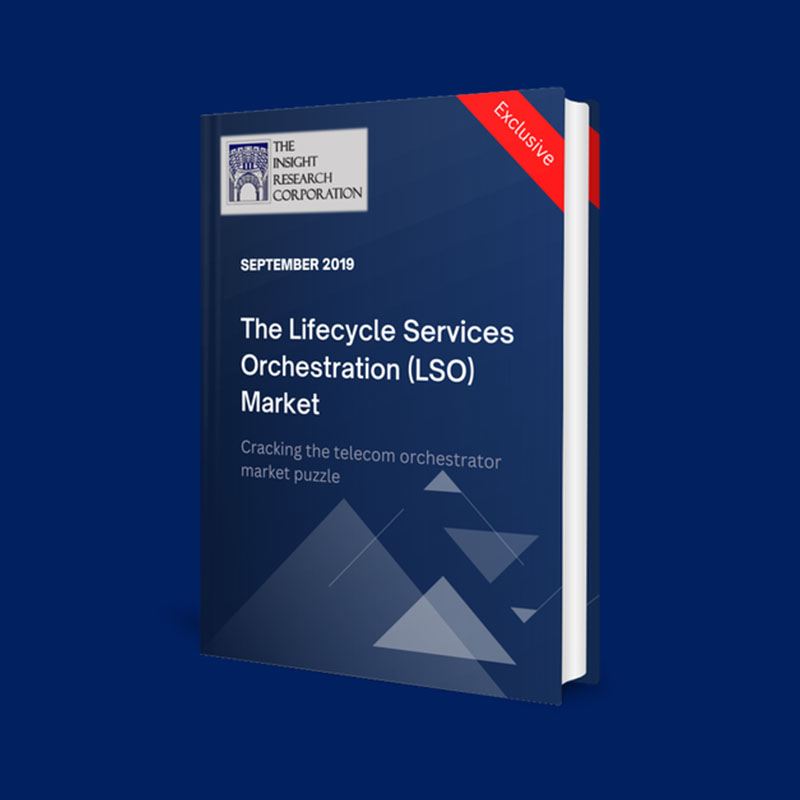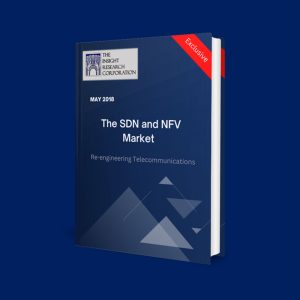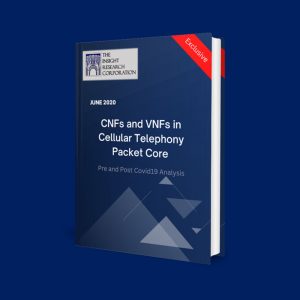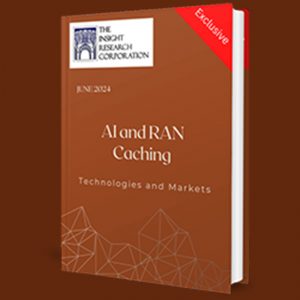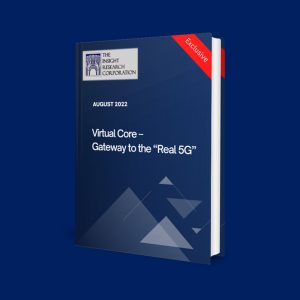Table of Contents
1 Executive Summary
1.1 Orchestrators and Orchestrators
1.2 Market Taxonomy
1.3 Report Organization
2 Prelude and Framework
2.1 Definition
2.2 Important Terms
2.2.1 SDN
2.2.2 NFV
2.2.3 Containers and Microservices
2.2.4 SD-WAN
2.2.5 Carrier Ethernet
2.2.6 MEF 3.0
2.3 Need for LSO
2.3.1 Monolithic OSS BSS
2.3.2 Limited Interfaces
2.3.3 Ad-Hoc Network Partner Relationships and Slow Application Rollouts
2.3.4 OTT Challenges
2.3.5 Lost Opportunities
2.4 Evolution of LSO
2.5 Use-Cases and Abstraction Approaches
2.5.1 Operation Threads
2.5.2 Views and Abstraction
2.6 Reference Architecture
2.6.1 Customer Domain
2.6.1.1 Customer Application Co-ordinator (CUS)
2.6.2 Service Provider (SP) and Partner Domains
2.6.2.1 Business Application (BUS)
2.6.2.2 Service Orchestration Functionality (SOF)
2.6.2.3 Infrastructure Control and Management (ICM)
2.6.2.4 Element Control and Management (ECM)
2.7 Management Interface Reference Points
2.7.1 Cantata
2.7.1.1 Functional Description
2.7.1.2 Status and Prospects
2.7.2 Allegro
2.7.2.1 Functional Description
2.7.2.2 Status and Prospects
2.7.3 Legato
2.7.3.1 Functional Description
2.7.3.2 Status and Prospects
2.7.4 Sonata
2.7.4.1 Functional Description
2.7.4.2 Status and Prospects
2.7.5 Interlude
2.7.5.1 Functional Description
2.7.5.2 Status and Prospects
2.7.6 Presto
2.7.6.1 Functional Description
2.7.6.2 Status and Prospects
2.7.7 Adagio
2.7.7.1 Functional Description
2.7.7.2 Status and Prospects
3 Challenges and Approaches
3.1 Overview of Challenges
3.1.1 All-encompassing Scope
3.1.2 Excessive Hierarchy
3.1.3 Overlap with Contemporary Technologies
3.1.4 Lack of Clarity
3.2 The Gist of LSO
3.3 Vendor Approaches
3.4 Going the Whole Hog
3.5 Anuta
3.5.1 Atom
3.5.2 Charting Independent Path
3.6 Netcracker
3.6.1 Solid Pedigree
3.6.2 Service Orchestrator
3.7 Bolstering the Interfaces
3.8 Amartus
3.8.1 Standards-based API
3.8.2 Initiatives with LSO
3.9 Settling Scores
3.1 Cataworx
3.10.1 AI-based Approach
3.10.2 Initiatives with LSO
4 Stakeholder and Company Profiles
4.1 High-level Overview
4.2 Accedian
4.2.1 Network Application Orchestration Offerings
4.3 Adva Optical
4.3.1 Network Application Orchestration Offerings
4.4 Amdocs
4.4.1 Network Application Orchestration Offerings
4.5 Ciena
4.5.1 Network Application Orchestration Offerings
4.6 Cisco
4.6.1 Network Application Orchestration Offerings
4.7 Clear Blockchain
4.7.1 Network Application Orchestration Offerings
4.8 DGIT Systems
4.8.1 Network Application Orchestration Offerings
4.9 Cloudify
4.9.1 Network Application Orchestration Offerings
4.1 ECI Telecom
4.10.1 Network Application Orchestration Offerings
4.11 Ericsson
4.11.1 Network Application Orchestration Offerings
4.12 Fujitsu
4.12.1 Network Application Orchestration Offerings
4.13 Huawei
4.13.1 Network Application Orchestration Offerings
4.14 Infinera
4.14.1 Network Application Orchestration Offerings
4.15 LB Networks
4.15.1 Network Application Orchestration Offerings
4.16 Nokia
4.16.1 Network Application Orchestration Offerings
4.17 RAD
4.17.1 Network Application Orchestration Offerings
4.18 Sandvine Technologies
4.18.1 Network Application Orchestration Offerings
4.19 Spirent Communications
4.19.1 Network Application Orchestration Offerings
4.2 Zeetta Networks
4.20.1 Network Application Orchestration Offerings
5 Telco Initiatives
5.1 The Slant towards MEF LSO
5.2 Allstream
5.3 AT&T
5.4 Bell Canada
5.5 BringCom
5.6 CBCcom
5.7 CenturyLink
5.8 Colt Business
5.9 Comcast Business
5.1 Cox Business
5.11 Equinix
5.12 Infonas
5.13 Liquid Telecom
5.14 Orange
5.15 PCCW Global
5.16 Singtel
5.17 Sparkle
5.18 Spectrum Enterprise
5.19 Sprint
5.2 Tata Communications
5.21 TDS Telecom
5.22 Telstra
5.23 Telus
5.24 Verizon
5.25 Vodafone
6 Market Forecasts
6.1 Research Methodology
6.2 Breakdown by Solution Type
6.2.1 Orchestrator Framework
6.2.2 Interfaces
6.3 Breakdown by Geography
6.3.1 North America
6.3.2 Europe, Middle East and Africa
6.3.3 Asia Pacific
6.3.4 Caribbean and Latin America
6.4 Breakdown by Telco Type
6.4.1 Wireline Telcos
6.4.2 Wireless Telcos
7 Glossary and Acronyms
List for Tables:
Table 1-1: Market for LSO and Other Network Application Orchestrator Solutions 2019-2025 ($ million)
Table 6-1: Market for LSO and Other Network Application Orchestrator Solutions; by Solution Type 2019-2025 ($ million)
Table 6-2: Market for LSO and Other Network Application Orchestrator Solutions; by Geographical Region 2019-2025 ($ million)
Table 6-3: Market for LSO and Other Network Application Orchestrator Solutions to the NA Region; by Solution Type 2019-2025 ($ million)
Table 6-4: Market for LSO and Other Network Application Orchestrator Solutions to the EMEA Region; by Solution Type 2019-2025 ($ million)
Table 6-5: Market for LSO and Other Network Application Orchestrator Solutions to the APAC Region; by Solution Type 2019-2025 ($ million)
Table 6-6: Market for LSO and Other Network Application Orchestrator Solutions to the CALA Region; by Solution Type 2019-2025 ($ million)
Table 6-7: Market for LSO and Other Network Application Orchestrator Solutions; by Telco Type 2019-2025 ($ million)
Table 6-8: Market for LSO and Other Network Application Orchestrator Solutions to Wireline Telcos; by Solution Type 2019-2025 ($ million)
Table 6-9: Market for LSO and Other Network Application Orchestrator Solutions to Wireless Telcos; by Solution Type 2019-2025 ($ million)
List for Figures:
Figure 1-1: Hierarchy of Orchestrators
Figure 1-2: LSO and Other Network Application Orchestrator Forecast Taxonomy
Figure 2-1: LSO Reference Architecture
Figure 3-1: Objectives of LSO
Figure 3-2: Management Requirement Hierarchy in LSO
Figure 3-3: Atom from Anuta Networks
Figure 3-4: Netcracker Service Orchestration
Figure 3-5: Amartus Gateway
Figure 4-1: Ciena Blue Planet
Figure 4-2: Logical Architecture of Cisco NSO
Figure 4-3: Distributed Orchestration Solution from Cloudify
Figure 4-4: ICSG from ECI Telecom
Figure 6-1: Share Distribution in the Market for LSO and Other Network Application Orchestrator Solutions; by Solution Type
Figure 6-2: Share Distribution in the Market for LSO and Other Network Application Orchestrator Solutions; by Geographical Region
6-3: Share Distribution in the Market for LSO and Other Network Application Orchestrator Solutions to the NA Region; by Solution Type
Figure 6-4: Share Distribution in the Market for LSO and Other Network Application Orchestrator Solutions to the EMEA Region; by Solution Type
Figure 6-5: Share Distribution in the Market for LSO and Other Network Application Orchestrator Solutions to the APAC Region; by Solution Type
Figure 6-6: Share Distribution in the Market for LSO and Other Network Application Orchestrator Solutions to the CALA Region; by Solution Type
Figure 6-7: Share Distribution in the Market for LSO and Other Network Application Orchestrator Solutions; by Telco Type
Figure 6-8: Share Distribution in the Market for LSO and Other Network Application Orchestrator Solutions to Wireline Telcos; by Solution Type
Figure 6-9: Share Distribution in the Market for LSO and Other Network Application Orchestrator Solutions to Wireless Telcos; by Solution Type
